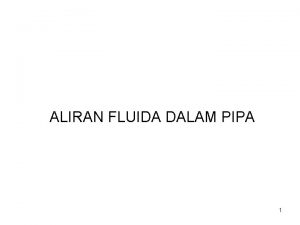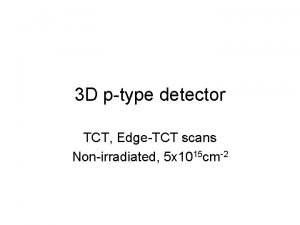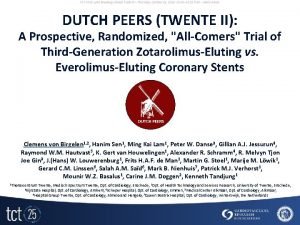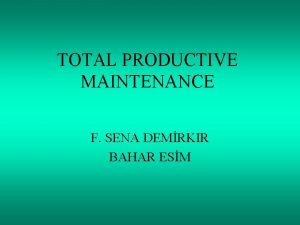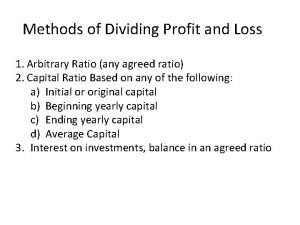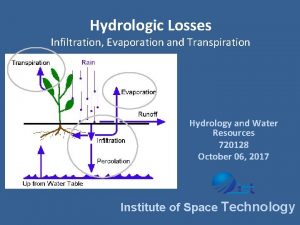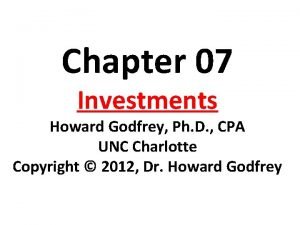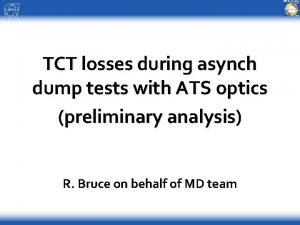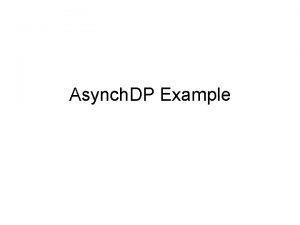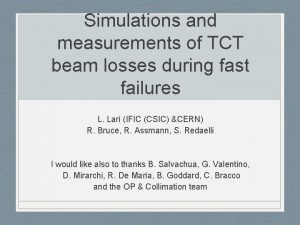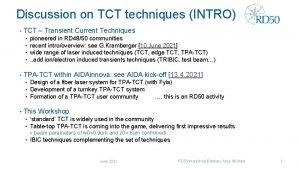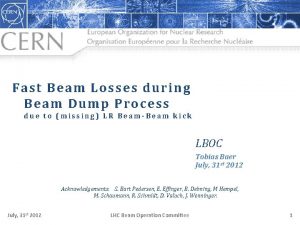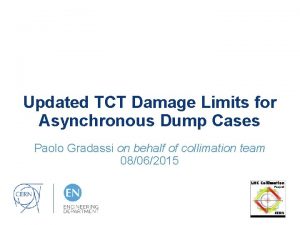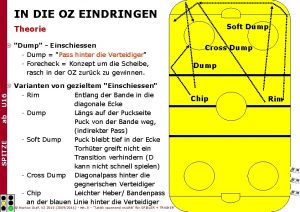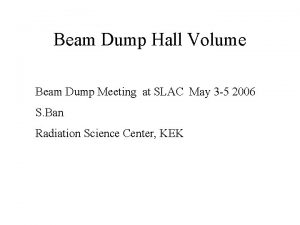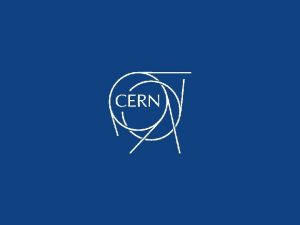Analysis of TCT losses during 2017 asynch dump














- Slides: 14

Analysis of TCT losses during 2017 asynch dump tests R. Bruce With help and inputs from C. Bracco, N. Fuster, S. Redaelli, C. Wiesner

Introduction • Reminder: Losses on TCTs during an asynch dumps need to be stay below a limit to make that they do not risk to be damaged – Limiting collimation hierarchy and hence β* in Run I and 2015 • In 2016, used new optics with rematched MKD-TCT phase advance (worst at 4 deg) to remove limitation and ensure that MKDs cannot kick primary beam directly onto TCTs • 2017: Improved version of ATS optics deployed, with (worst) MKD-TCT phase advance at 154 deg – Not as good as for the nominal optics, but within specified range of 30 deg from 0 and 180 – Started carefully with larger margin TCDQ-TCT than in 2016 – Stayed at β*=40 cm and TCTs at 9 σ in spite of 1 σ more margin from IR 6/7 R. Bruce, 2017. 07. 31 2

Situation in 2017 • Based on data, would like to verify that the assumptions done for the 2017 run were correct • What can we conclude on the TCT losses from the asynch dump tests done during the 2017 validations? • – If we scale up to a full physics beam, and assume that the TCT and TCDQ placement is on the limit of the tolerated range, are the TCTs safe? – Consistent with expectations from simulations? – Can the operational TCT setting safely be moved in further? This would allow a further decrease in β*, as envisaged in Evian To check dependence of TCT losses on setting: as in 2016, did asynch dump tests with standard TCT settings as well as tighter TCTs in 2017 R. Bruce, 2017. 07. 31 3

Asynch dump tests • Asynch dump tests carried out in commissioning, TS 1 revalidation and MD • Checked TCT losses in the following tests: Timestamp Machine configuration TCT setting 22/05/17 22: 16: 07. 411 Commissioning: 40 cm collision, 150 urad 9. 0 σ 03/06/17 22: 49: 12. 753 Commissioning: 40 cm collision, , 150 urad 7. 5 σ 08/07/17 11: 35: 38. 708 TS 1: 40 cm, end of squeeze, 150 urad, B 2 only 7. 5 σ 11/07/17 08: 09: 17. 229 TS 1: 40 cm collision, 90 urad 9. 0 σ 10/07/17 04: 43: 33. 996 TS 1: 40 cm collision, 150 urad 9. 0 σ 12/07/17 02: 30. 836 TS 1: 40 cm collision, 150 urad 6. 5 σ 25/07/17 22: 34: 26. 412 MD: 30 cm end of squeeze, 175 urad, pilots only 6. 5 σ • In addition, several data sets removed since the test was not carried out properly, and several tests failed due to operational mistakes R. Bruce, 2017. 07. 31 4

Outline of TCT loss analysis (1) • Goal: scale up TCT losses during test to a full physics beam to judge safety • Method: From BSRA, calculate beam population in abort gap over slice where beam can be kicked on TCTs – Consider 8 bunches between 5 σ and 16 σ R. Bruce, 2017. 07. 31 June 6 2017 Low MKD kicks Kick[σ] vs time High MKD kicks 5

Outline of TCT loss analysis (2) • Calculate the number of protons lost on TCT by multiplying BLM signal by conversion factor (from FLUKA or measurement) – 40 us BLM data from post mortem • Take ratio of protons lost on TCT to the abort gap slice, and scale up to full physics beam in corresponding slice R. Bruce, 2017. 07. 31 BLM response 6

Updates since last presentation • First attempt at analyzing TCT losses: CWG/MPP on 9/6/2017 • Saw sharp increase in losses at 7. 5 σ in B 2 – Not real – problem in analysis – Off-momentum effect from RF switched off should be small • Repeating analysis, including also all new asynch dump tests, and including 30 cm MD • Comparing data scaled to full 25 ns physics beam with simulations – Asynch dump, all kickers firing simultaneously, as in tests – Simulations: factor ~3 larger losses for a single-module pre-fire R. Bruce, 2017. 07. 31 7

Comparison measurements / simulations • TCT losses during asynch dump, scaled to full physics beam, as function of TCT setting Using BLM conversion factor 2. 1 E-11 Gy/p, measured parasitically in aperture MDs 2015/16 NIM A 848 (2017) 19– 30 R. Bruce, 2017. 07. 31 8

Comparison measurements / simulations • Same, using FLUKA BLM conversion factor • Excellent agreement within ~30% except for 30 cm and B 2 with TCTs at 6. 5 σ Using BLM conversion factor 4. 7 E-11 Gy/p, simulated with FLUKA, E. Skordis, CWG 206 R. Bruce, 2017. 07. 31 9

Comparison measurements / simulations • Explanation (? ): Real phase to IR 5 TCT B 2 better than the ideal used in simulation • Compare: primary losses simulated with phase-space integration (method explained in NIM A 848 (2017) 19– 30) MKD-TCT IR 5 B 2 40 cm 30 cm Ideal 154 o 155 o Measured 156 o 157 o Courtesy OMC team Using BLM conversion factor 4. 7 E-11 Gy/p, simulated with FLUKA, E. Skordis, CWG 206 R. Bruce, 2017. 07. 31 10

Observations • Scaled up to full physics beam, order of 1 E 9 protons could be expected on TCTs during asynch dump and maybe 3 E 9 during single-module prefire – Given that we are still on the “flat” part of the curve given by spread-out secondary losses, this is well below estimated damage of ~1. 2 E 11 p for plastic deformations (E. Quaranta et al, IPAC 2016) – With more focused primary beam, plastic deformation limit is estimated at 5 E 9 protons (A. Bertarelli et al. , MPP workshop 2013) • All tests done with 1. 2 mm bump in IR 6 – At 40 cm, this is 2. 4 σ – At 30 cm, this is 2. 2 σ in B 1 (changing β in IR 6 during telescopic squeeze) • Assuming a TCT setting of 8 σ compatible with aperture, at 6. 5 σ as in test we have a total margin violation of 2. 4 σ + 1. 5 σ = 3. 9 σ – SIS interlock should dump already at 1 σ at TCTs and 1. 5 σ at TCDQ – Extremely pessimistic conditions in 6. 5 σ test ! We should have some margin R. Bruce, 2017. 07. 31 11

Conclusions • TCT losses analyzed in all asynch dump tests done in 2017 • In most cases, excellent agreement with simulations – At 6. 5 σ TCT setting, measure less losses than predicted by simulations • Even at 6. 5 σ TCT setting and 1. 2 mm bump in IR 6, losses scaled up to a full physics beam are well under control – Much more pessimistic than can be expected in operation • No showstopper for going to β*=30 cm from TCT losses during asynch dump – No showstopper seen in aperture measurement either R. Bruce, 2017. 07. 31 12

Backup R. Bruce, 2017. 07. 31 13

Phase space integration • For parametric studies, need faster optics-independent method • Using simplified method to study the dependence of primary impacts on the phase advance • Integrating beam distribution over the linear cuts in phase space • Again, studying 25 ns bunches separately and summing over all • Depends only on settings and phase advance - optics not needed • All collimators black absorbers => only primary impacts studied Setup described in detail in PRSTAB 18, 061001 (2015) NIM A 848 (2017) 19– 30 R. Bruce, 2017. 02. 06 14
 Contoh aliran dalam pipa
Contoh aliran dalam pipa Tct congress 2018
Tct congress 2018 Tct scan
Tct scan Tct
Tct Tct 2013
Tct 2013 Sql server crash dump analysis
Sql server crash dump analysis 16 losses in tpm
16 losses in tpm What is arbitrary ratio
What is arbitrary ratio Six big losses in lean manufacturing
Six big losses in lean manufacturing 16 types of losses in tpm
16 types of losses in tpm Infiltration
Infiltration Nonrecaptured section 1231 losses
Nonrecaptured section 1231 losses In khosla's formula monthly losses is calculated as
In khosla's formula monthly losses is calculated as The bend
The bend Artical 231
Artical 231
